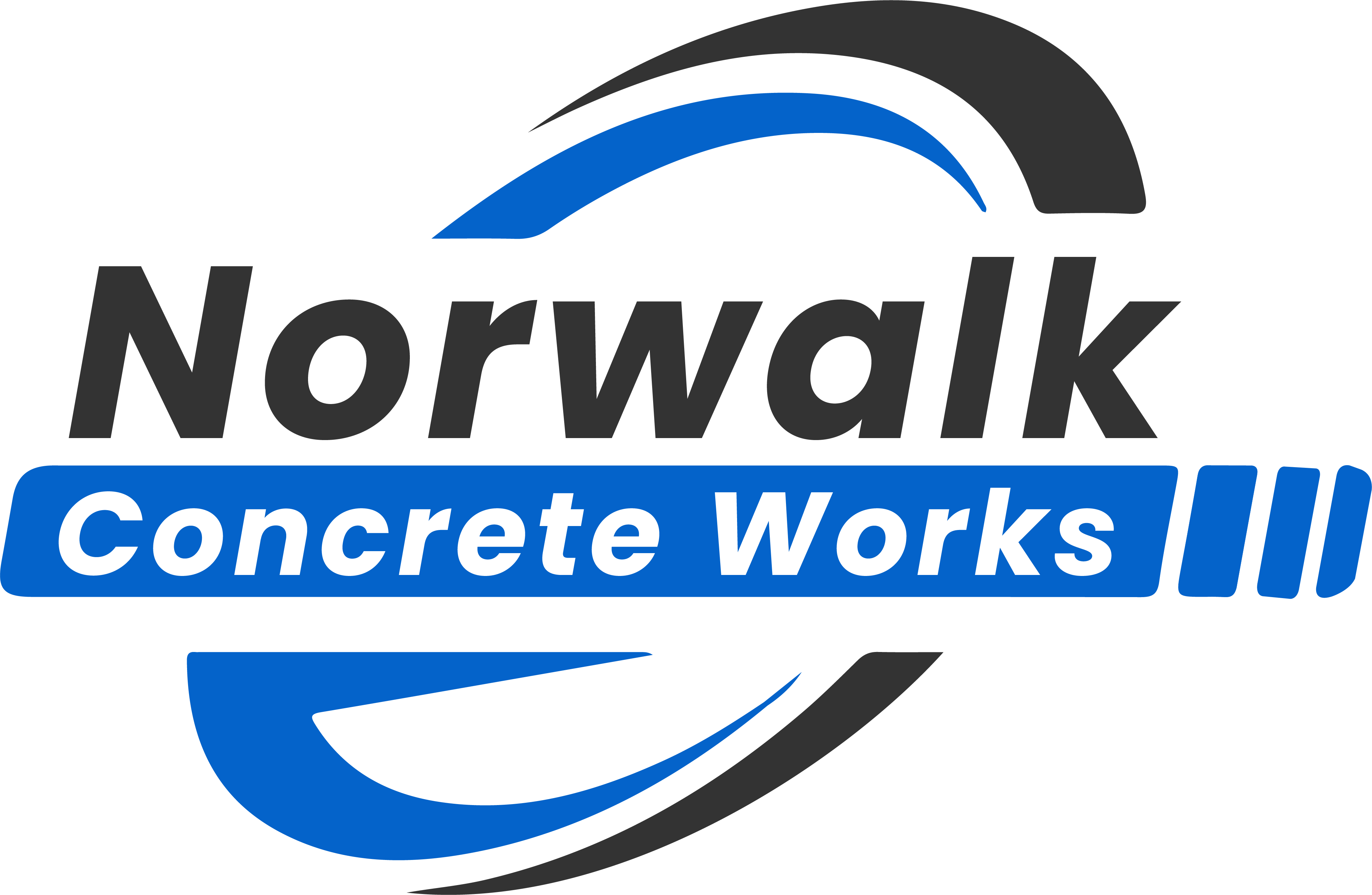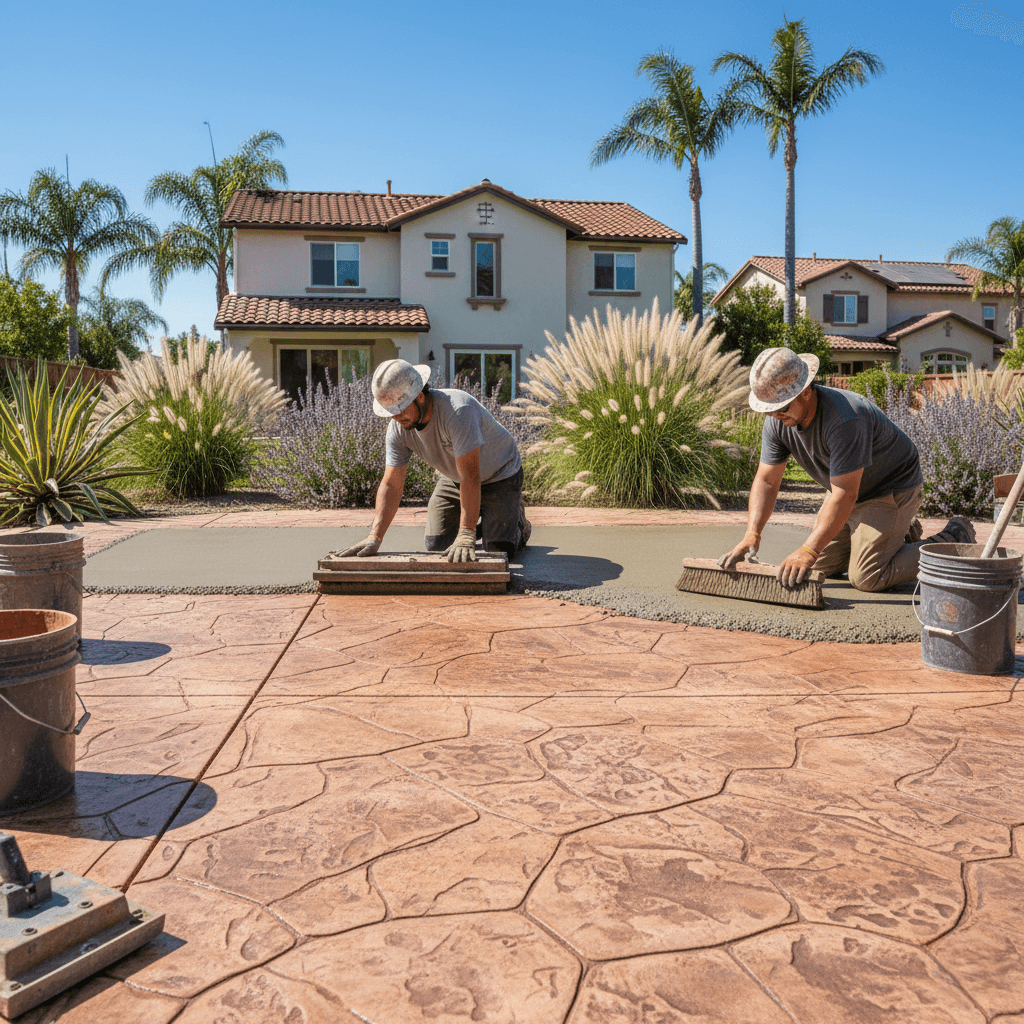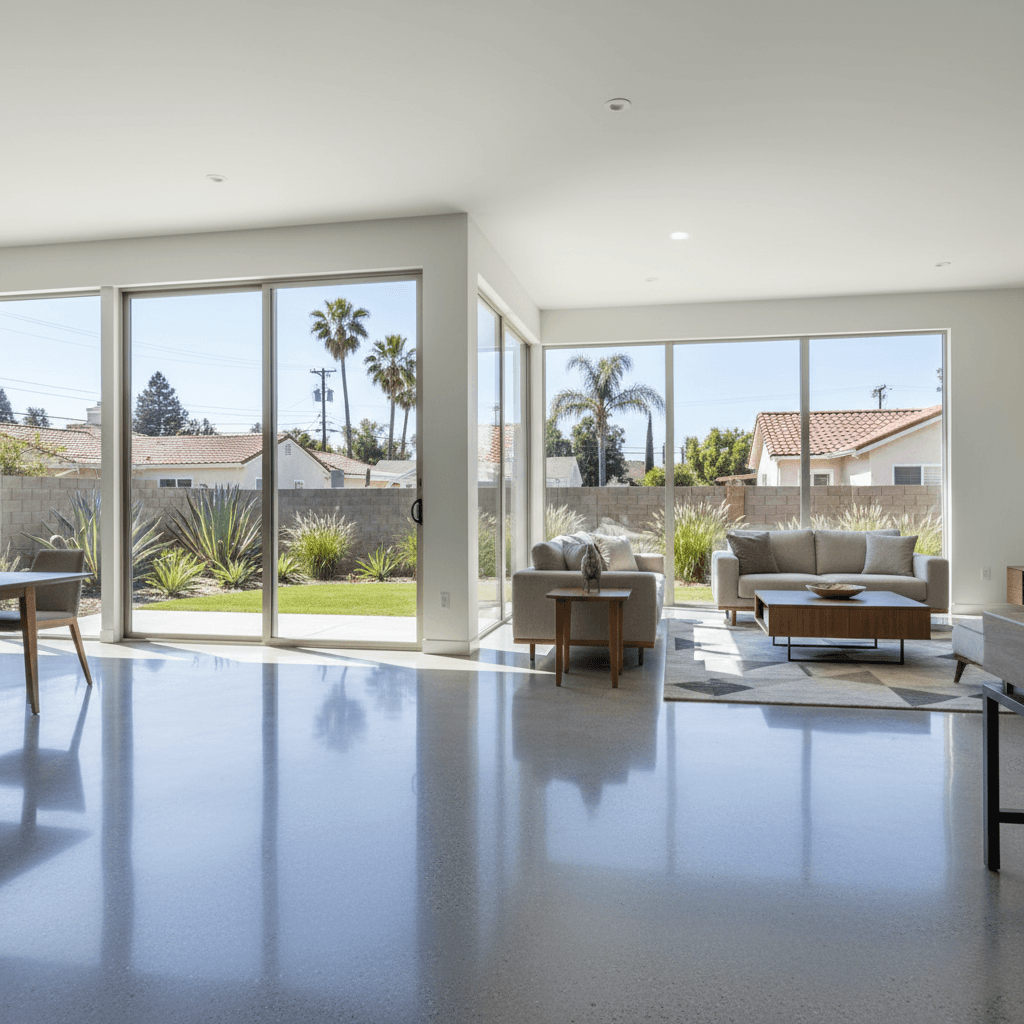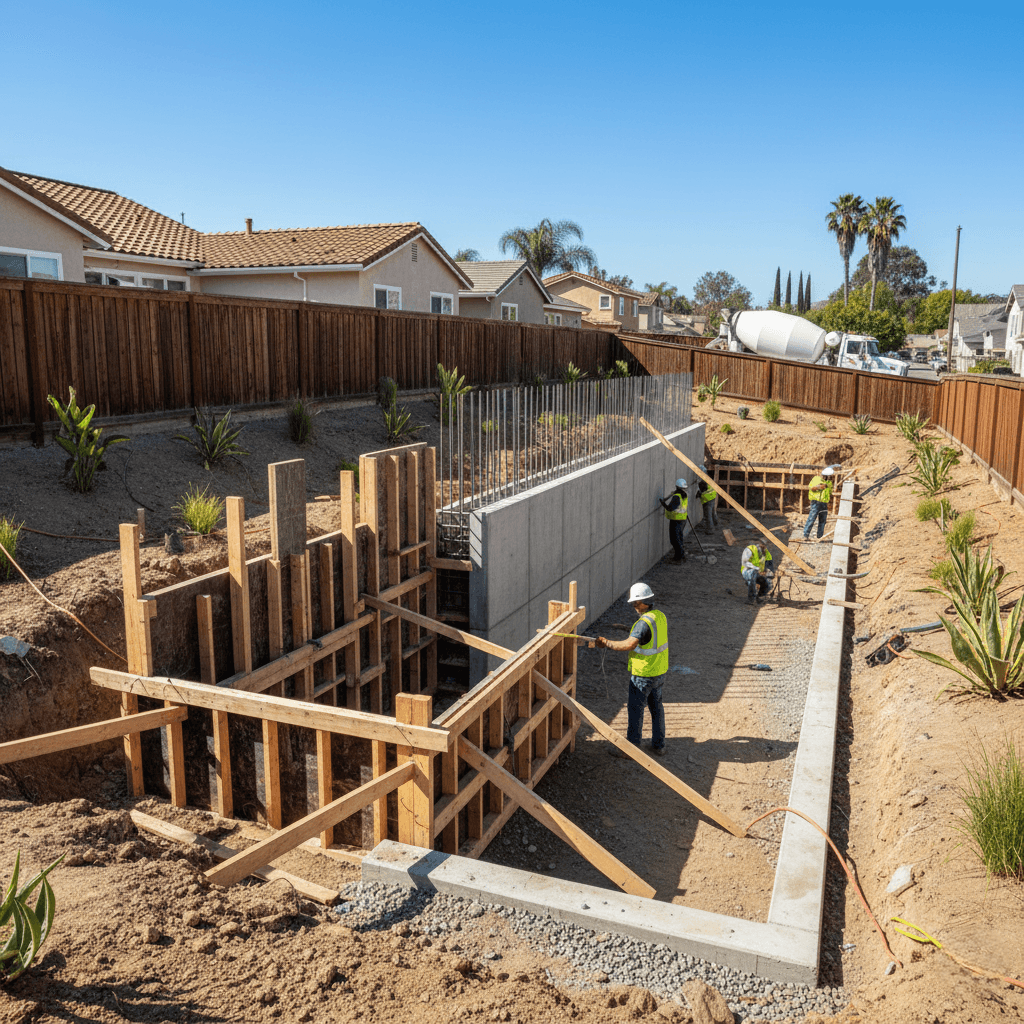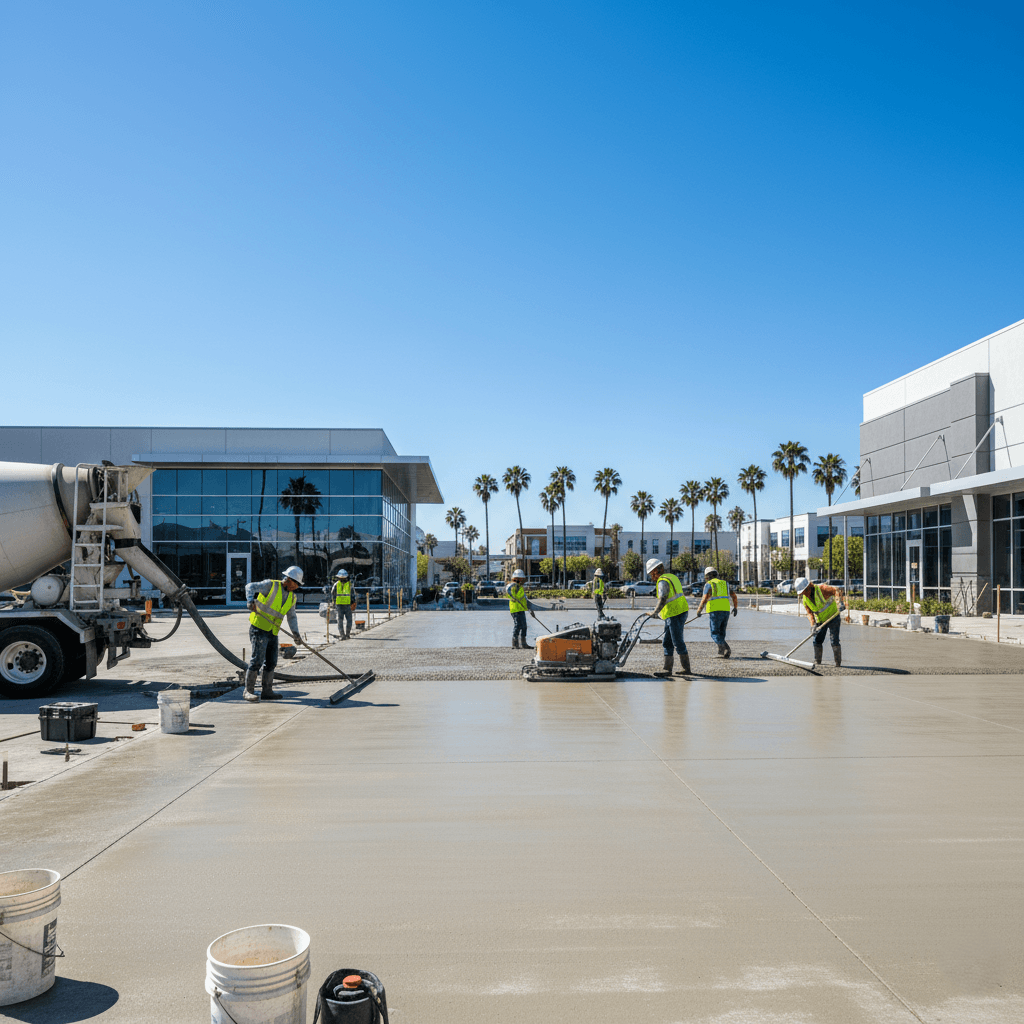
Norwalk Commercial Concrete: Flooring, Slabs & Flatwork
Commercial Concrete Norwalk
Commercial concrete applications throughout Norwalk business districts require specialized expertise that combines structural integrity with aesthetic appeal suitable for professional environments. Modern businesses increasingly recognize that quality concrete installations directly impact operational efficiency, employee satisfaction, and customer impressions. Furthermore, Los Angeles County’s competitive commercial market demands flooring solutions that withstand heavy traffic while maintaining professional appearances for decades. Advanced concrete technologies provide sustainable, cost-effective alternatives to traditional materials while supporting LEED certification goals. Professional contractors understand the unique requirements of commercial spaces and deliver solutions that exceed performance expectations.

Advanced Commercial Concrete Flooring
Contemporary commercial concrete flooring systems provide superior durability while accommodating diverse business needs throughout Norwalk’s industrial corridors. Polished concrete surfaces create modern, professional atmospheres that reflect natural light and reduce energy costs. Advanced grinding techniques produce varying gloss levels from subtle satin finishes to high-gloss surfaces that rival traditional terrazzo installations.
Specialized concrete mixes incorporate performance additives that enhance load-bearing capacity and chemical resistance. Fiber reinforcement prevents micro-cracking while extending service life significantly beyond traditional flooring materials. Additionally, integral color systems ensure uniform appearance throughout large installations without surface treatments that might wear over time.
Performance Characteristics
Commercial concrete flooring excels in high-traffic environments where durability and maintenance efficiency matter most. These surfaces resist staining from oils, chemicals, and food products commonly encountered in commercial settings. Furthermore, antimicrobial treatments integrate into concrete matrices to support health and safety requirements in healthcare and food service applications.
Thermal properties provide natural temperature regulation that reduces HVAC costs while maintaining comfortable working conditions. Radiant heating integration optimizes energy efficiency during cooler seasons common in Southern California winter months. Sound absorption characteristics minimize noise transmission between floors, creating more pleasant work environments.
Structural Commercial Concrete Slabs
Foundation and structural slab systems form the backbone of commercial construction throughout Norwalk’s growing business community. Post-tensioned concrete technology enables longer spans with reduced thickness, maximizing usable space while minimizing material costs. Advanced engineering ensures optimal load distribution for heavy equipment and storage applications.
Vapor barrier integration prevents moisture migration that could damage sensitive equipment or inventory. Proper joint placement accommodates thermal expansion while maintaining structural integrity over decades of service. Professional installation techniques ensure uniform thickness and optimal concrete consolidation around embedded utilities and structural elements.
Load-Bearing Specifications
Industrial applications near transportation hubs like the Norwalk Green Line station require concrete slabs capable of supporting heavy machinery and vehicle loads. Reinforcement design calculations account for dynamic loads, concentrated forces, and seismic requirements specific to Southern California conditions. Quality control measures verify concrete strength through systematic testing protocols.
Specialized admixtures enhance workability during placement while achieving superior strength characteristics. Accelerated curing techniques reduce construction schedules without compromising long-term performance. These advantages particularly benefit businesses requiring rapid facility turnover or phased construction approaches.
Professional Concrete Flatwork Services
Concrete flatwork installation encompasses diverse applications from parking lots and sidewalks to loading docks and equipment pads throughout Norwalk commercial properties. Professional contractors utilize laser-guided screeding equipment to achieve precise elevations and uniform thickness. Advanced finishing techniques create surfaces appropriate for specific operational requirements.
Drainage integration prevents water accumulation that could interfere with business operations or create safety hazards. Proper slope design directs runoff toward collection systems while maintaining accessibility compliance. Expansion joint placement accommodates seasonal movement without compromising surface integrity or appearance.
Specialized Applications
Loading dock construction requires precise elevation coordination with truck bed heights while incorporating safety features like wheel stops and impact protection. Concrete flatwork installation in these areas must accommodate heavy loads while providing slip-resistant surfaces for worker safety. Professional contractors understand dock plate integration and utility coordination requirements.
Equipment pads require specialized reinforcement and isolation techniques that prevent vibration transmission to adjacent structures. Anchor bolt placement follows manufacturer specifications while accommodating field adjustments during installation. These applications demand precision that only experienced commercial contractors can deliver consistently.
Decorative Commercial Concrete Solutions
Aesthetic concrete applications enhance professional environments while maintaining practical performance characteristics essential for business operations. Stamped concrete patterns create sophisticated entries and gathering spaces that reflect corporate identity. Color integration provides branding opportunities while ensuring long-term color stability under Southern California’s intense UV exposure.
Architectural precast elements enable complex shapes and intricate details impossible to achieve with site-cast methods. These components integrate seamlessly with cast-in-place construction to create unified design themes. Custom molds accommodate unique architectural visions while maintaining structural performance requirements.
Brand Integration Opportunities
Logo embedment and custom graphics transform concrete surfaces into powerful branding elements that reinforce corporate messaging. Advanced engraving techniques create permanent installations that withstand weather and traffic while maintaining sharp detail clarity. Color coordination ensures brand consistency across multiple building elements.
Wayfinding integration combines functionality with aesthetics through color-coded pathways and directional indicators. These systems particularly benefit large commercial complexes near major intersections like Imperial Highway and Norwalk Boulevard, where visitor orientation becomes crucial for business success.
Sustainable Commercial Concrete Practices
Environmental consciousness drives commercial concrete innovations that reduce carbon footprints while maintaining performance standards. Recycled aggregate incorporation diverts waste materials from landfills while creating high-quality concrete mixes. Supplementary cementitious materials like fly ash and slag reduce Portland cement content without compromising strength characteristics.
Local sourcing strategies minimize transportation impacts while supporting regional economies. Concrete’s longevity reduces replacement cycles that generate construction waste over building lifespans. These characteristics align with California’s environmental goals and support LEED certification requirements, which are increasingly important for commercial developments.
Energy Efficiency Benefits
Thermal mass properties moderate interior temperatures, reducing mechanical system loads throughout seasonal temperature variations. Light-colored surfaces reflect solar radiation, contributing to heat island reduction in urban areas. These characteristics become particularly valuable near transportation corridors where pavement heat contributes to regional temperature elevation.
Pervious concrete applications manage stormwater runoff while reducing infrastructure burdens on municipal systems. These installations particularly benefit commercial developments where parking area drainage challenges traditional approaches. Professional design ensures optimal permeability while maintaining structural integrity under vehicle loads.
Maintenance and Lifecycle Considerations
Preventive maintenance programs preserve commercial concrete investments while minimizing operational disruptions. Professional assessment identifies potential issues before they require costly repairs or replacements. Systematic cleaning protocols maintain professional appearances while protecting surface treatments and sealers.
Joint sealing prevents moisture intrusion and debris accumulation that could lead to spalling or cracking. Regular resealing maintains stain resistance and enhances surface durability in high-traffic applications. These maintenance investments extend service life significantly while preserving aesthetic appeal.
Repair and Restoration Techniques
Advanced repair materials restore concrete performance while maintaining visual continuity with existing installations. Rapid-setting formulations minimize business disruptions during maintenance activities. Professional contractors coordinate repairs during off-hours to avoid interference with daily operations.
Structural repairs address load-bearing concerns while preserving architectural elements. Carbon fiber reinforcement systems strengthen existing concrete without adding significant thickness or weight. These innovations enable cost-effective rehabilitation of aging commercial facilities throughout established business districts.
Local Regulatory Compliance
Norwalk commercial concrete installations must comply with California Building Code requirements while meeting local zoning and accessibility standards. Professional contractors understand permit processes and coordinate inspections to ensure project approval. ADA compliance integration ensures universal access without compromising design aesthetics.
Environmental regulations govern concrete washout procedures and waste management during construction phases. Certified contractors implement best practices that protect local water quality while meeting regulatory requirements. These protocols become particularly important near sensitive areas like the San Gabriel River corridor.
Quality Assurance Standards
Testing protocols verify concrete strength, durability, and performance characteristics throughout construction phases. Independent testing laboratories provide third-party verification that supports warranty coverage and building certifications. Professional documentation maintains compliance records essential for facility management and insurance purposes.
Material certifications ensure concrete mixes meet specified requirements while providing traceability for quality control purposes. Batch plant monitoring prevents variations that could compromise performance or appearance. These quality systems support long-term asset value while minimizing risk exposure.
Technology Integration Advances
Smart concrete technologies introduce monitoring capabilities that provide real-time performance data for facility management systems. Embedded sensors track structural health, temperature variations, and loading conditions through smartphone applications. These innovations support predictive maintenance strategies that optimize operational efficiency.
Digital design tools enable precise visualization before construction begins, reducing change orders and ensuring client satisfaction. Building Information Modeling (BIM) integration coordinates concrete elements with other building systems for optimal performance. These technologies streamline project delivery while improving final results.
Future Innovation Directions
Self-healing concrete technologies promise reduced maintenance requirements through autonomous crack repair capabilities. Photocatalytic surfaces break down air pollutants while maintaining a clean appearance in urban environments. These innovations position commercial concrete at the forefront of sustainable building technology evolution.
3D printing applications enable complex architectural elements while reducing waste and labor requirements. Customization possibilities expand dramatically through digital fabrication techniques. Early adopters in Norwalk’s progressive business community can leverage these innovations for competitive advantages.
Professional Installation Expertise
Commercial concrete projects require specialized knowledge that encompasses structural engineering, construction sequencing, and business continuity considerations. Licensed contractors possess insurance coverage and bonding capacity essential for large-scale commercial work. Quality control systems ensure consistent results across multiple project phases.
Norwalk Concrete Works specializes in comprehensive commercial concrete solutions throughout Los Angeles County, combining technical expertise with business acumen to deliver exceptional results for diverse commercial applications. We understand the unique challenges of commercial construction, including tight schedules, occupied building restrictions, and performance requirements that exceed residential standards. Additionally, our experience with concrete flatwork installation, structural slab construction, and decorative applications ensures that your commercial concrete investment delivers lasting value, operational efficiency, and professional aesthetics that enhance your business success for decades.
